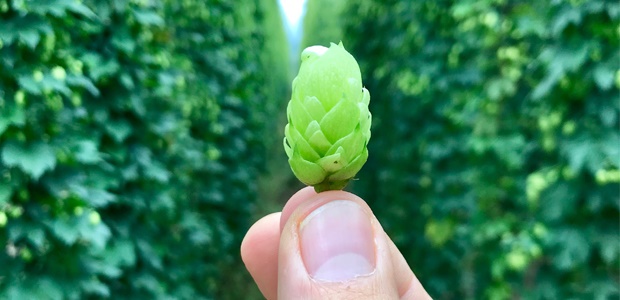(Images: Karl Tessenforf)
For most people, this is just another month but if you’re a beergeek or homebrewer, it’s practically Christmas. I jumped in a car with a couple of good buds to visit the land of green buds.
True to form, we arrived in George otherwise known as ‘cold and wet’ on a nippy, rainy day. We were greeted by Gerrie Brits who we later found out is the godfather of South African hops. Before we could hit the fields, we had to go through a safety briefing. Since AB InBev’s takeover of SAB, safety takes priority over everything. We even had to write a short safety exam. It turns out walking and talking on your cell phone on the premises is the pretty much the same as committing a crime.
With the briefing done, we dived into a hop presentation with Gerrie and it was awesome. Gerrie is a 30 year SAB veteran and he’s responsible for setting up the hop breeding programme. He is actually retired but they’ve brought him back as a consultant. Gerrie is the father of every hop variety that SAB uses today and as we learned, this is no mean feat. Hops are fickle plants that like the northern hemisphere. In fact, George is the only region in South Africa where the conditions are just right for hop growing.
Hops thrive between 35 and 55 degrees latitude and they need around 15 hours of daylight. Having neither of those things, Gerrie was tasked with figuring out how to grow hops for local use. In the early days, they used to supplement daylight with artificial light to trick the hops into thinking the days were longer. Over time with careful guidance and Gerrie’s hop slicing skills, he developed high alpha acid hops that thrived in our climate. If this feels like an oversimplification of Gerrie’s work, that’s because it is. Some of his hops took as long as 15 years to develop. With our brains full of hoppy knowledge, we took a drive out to the farms. There are a total of eight farms covering a combined area of over 400 hectares.
Standing in amongst the hop bines (yes bines, not vines) we learnt that hops can grow as much as 10 cm a day. There was also a lot of other information but I was too busy crushing hops between my fingers to release the aromas. Gerrie is particularly proud of his Southern Passion hop, which has a massive granadilla aroma. It’s become a favourite of local craft brewers and it’s also making waves overseas.
The hops are harvested by workers on high platforms attached to a truck. They slash the bines down with pangas as they drive through the fields. The hops are then transported to the processing plant where they are fed one by one into the machine. The hops are stripped off and then go through a series of belts and rollers before eventually ending up in a large bin. From there they’re transported to the kiln and dried at 65°C for 8-12 hours. Staying true to their fickle nature, hops need to be processed fairly quickly otherwise they begin to decompose. Finally, the hops are processed into pellets and packed into huge bales.
It takes about half a day to visit the hop farm and I’d highly recommend it. It will change your perception of beer and just how difficult it is to grow the world-class hops. If you’re lucky enough you might even have Gerrie as your tour guide.
Karl Tessendorf is one part of the duo that hosts ‘Beer Country‘, South Africa’s first TV show dedicated to beer, braai and the open road.
ALSO READ:

